Basic components of a Solar water heating system
The basic form of a solar water heating system comprises storage tank, solar collectors and interconnecting pipe work. The solar collectors are usually mounted on roof of a building to capture solar radiation. Small tubes run through the solar collectors and carry fluid either water or heat transfer liquid with low boiling point.
The fluid absorbs heat from the solar collectors and transfer heat to incoming water.
We supplies the various types of Solar water heaters which ranges from ready made 100, 200, 300, 500 litter and custom made higher capacity models for specific applications such as hotels and community living apartments.
There are two types of solar collectors used in the solar water heating system:
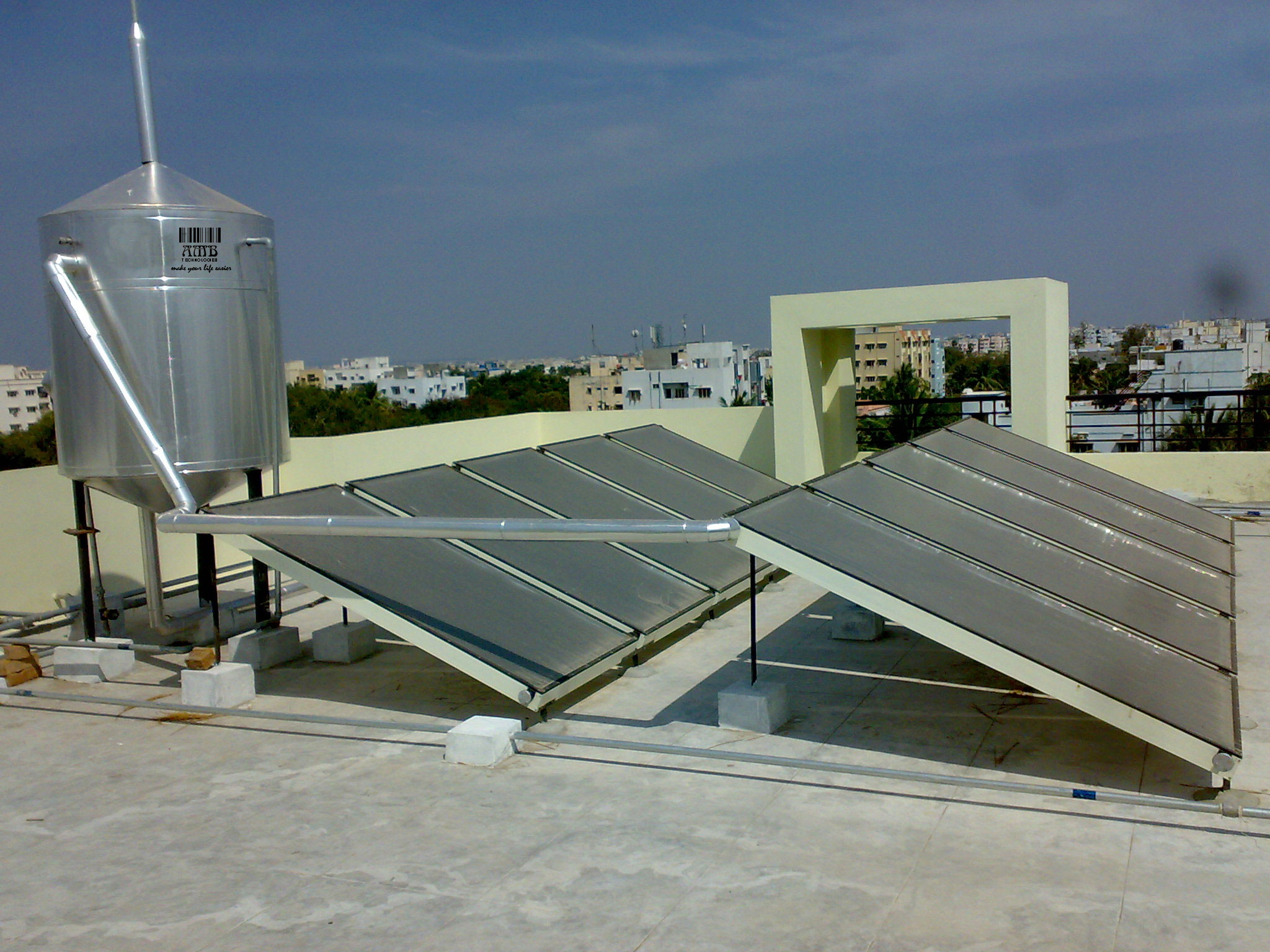
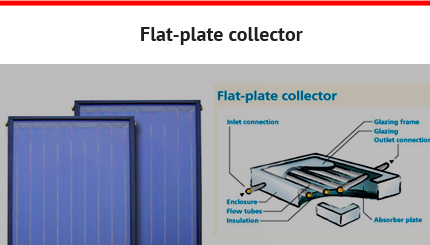
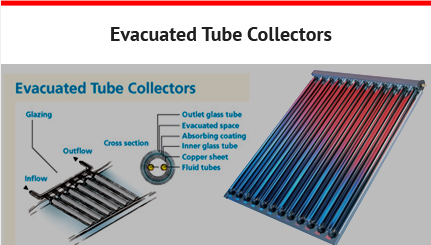
The evacuated tube collector is generally more complex manufacturing process than flat plate collector. However, the evacuated tube collector is more effective per unit area than flat plate collector and requires a smaller installed area.
Flat-Plate Collector
A flat-plate collector, the most common type, is a rectangular box with metal absorber plate inside the box. The box is painted in dark color to maximize absorption of solar energy. The collector is glazed and insulated to limit the amount of heat escape from the box such that the fluid inside the collector can be maintained at warm temperature.
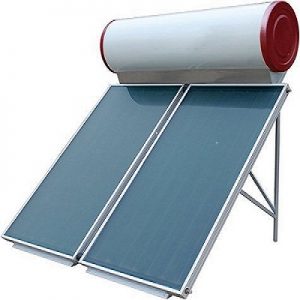
Evacuated Tube Collectors
Evacuated tube collectors are made up of rows of parallel, transparent glass tubes. Each tube consists of a glass outer tube and an inner tube covered with special coating that absorbs solar energy well. Since the tube is round in shape, the sun rays are always striking the tubes surface at right angles, thus maximizes the total amount of solar radiation absorbed during the day. In addition, the tube works in the same way as a vacuum flask with air is withdrawn from the space between the inner and outer tubes forming a vacuum, which can minimize heat loss from the collector and to reduce temperature drop of the heated water or heat transfer fluid inside the tube. Evacuated tube collectors can heat water to fairly high temperatures.
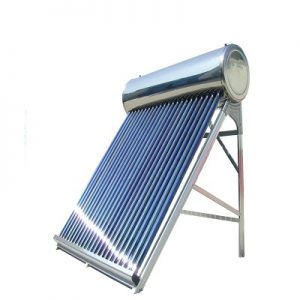
Solar Storage Tank
A solar water heating system generally requires a well-insulated storage tank to hold the solar heated water. The storage tank may sometimes be housed with a backup electric or gas heater to boost the solar heated water to a desired temperature when the temperature of the solar heated water is lower than the desired temperature. This may happens when solar energy is not available, for example, at night or on a cloudy day.
Sizing Your System
You need to determine the right size solar water heater to install. Sizing a solar water heater involves determining the total collector area and the storage volume required to provide 100% of your household’s hot water.
Solar storage tanks are usually 100, 200, 300, 500 or 1000 litre capacity. A small (100 to 300 litre) system is sufficient for 1 to 10 people, a medium (500 litre) system is adequate for an 11 or 25 person household, and a large (1000 litre) system is appropriate for 26 to 40 people.
Benefits of using solar water heating system
- Using solar water heating system will help to reduce harmful emission from fossil fuels.
- You can also enjoy free energy from the sun, which could save your energy cost in heating water.
- With the use of solar water heaters, considerable savings on electricity bills can be made.
- The use of 1000 Solar water Heaters of 100 litres capacity each can contribute to a peak load saving of approximately 1 MW.
- A solar water heater of 100 liter capacity can prevent emission of 1.5 tons of carbon dioxide per year.
Applications of solar water heating systems
Solar water heating system can be used for a wide range of applications. It may be suitable for establishments with regular hot water demand in daytime and year round hot water demand such as
- HOTELS
- HOSTELS
- HOMES
- HOSPITALS
- SCHOOLS
- DAIRY PLANTS
- SPORT CENTERS
- OLD AGE HOMES AND FORM HOUSES
- INDUSTRIES
- SHOWERS
- WASHROOMS
- CANTEENS
- OFFICES BUILDINGS
- SWIMMING POOL
